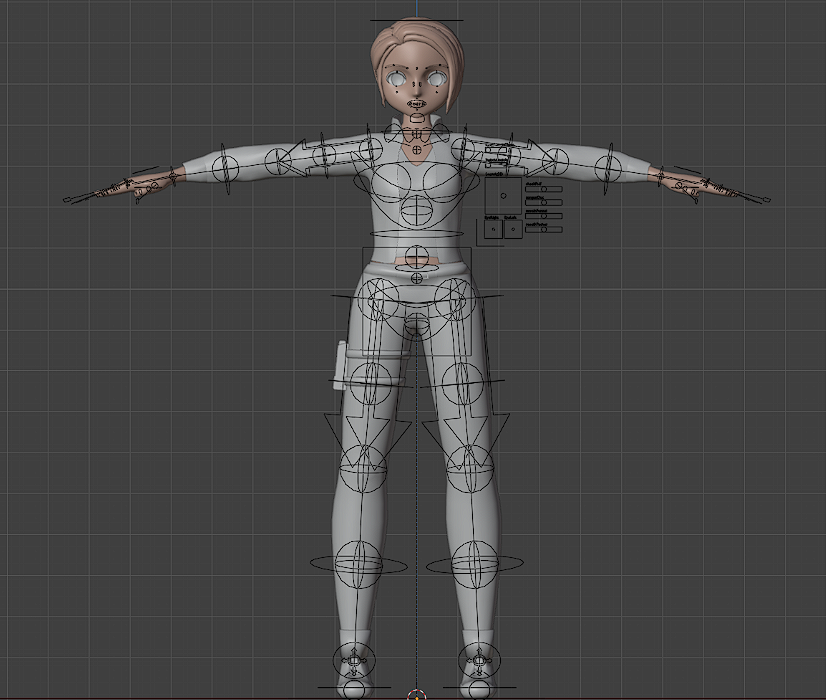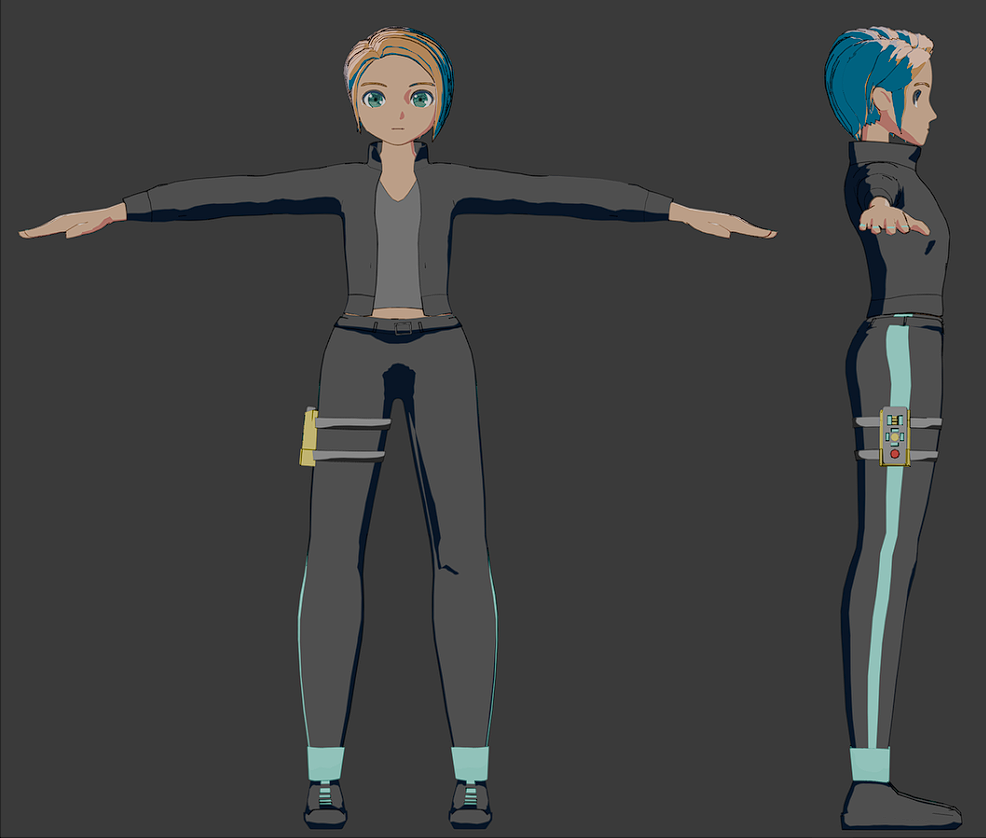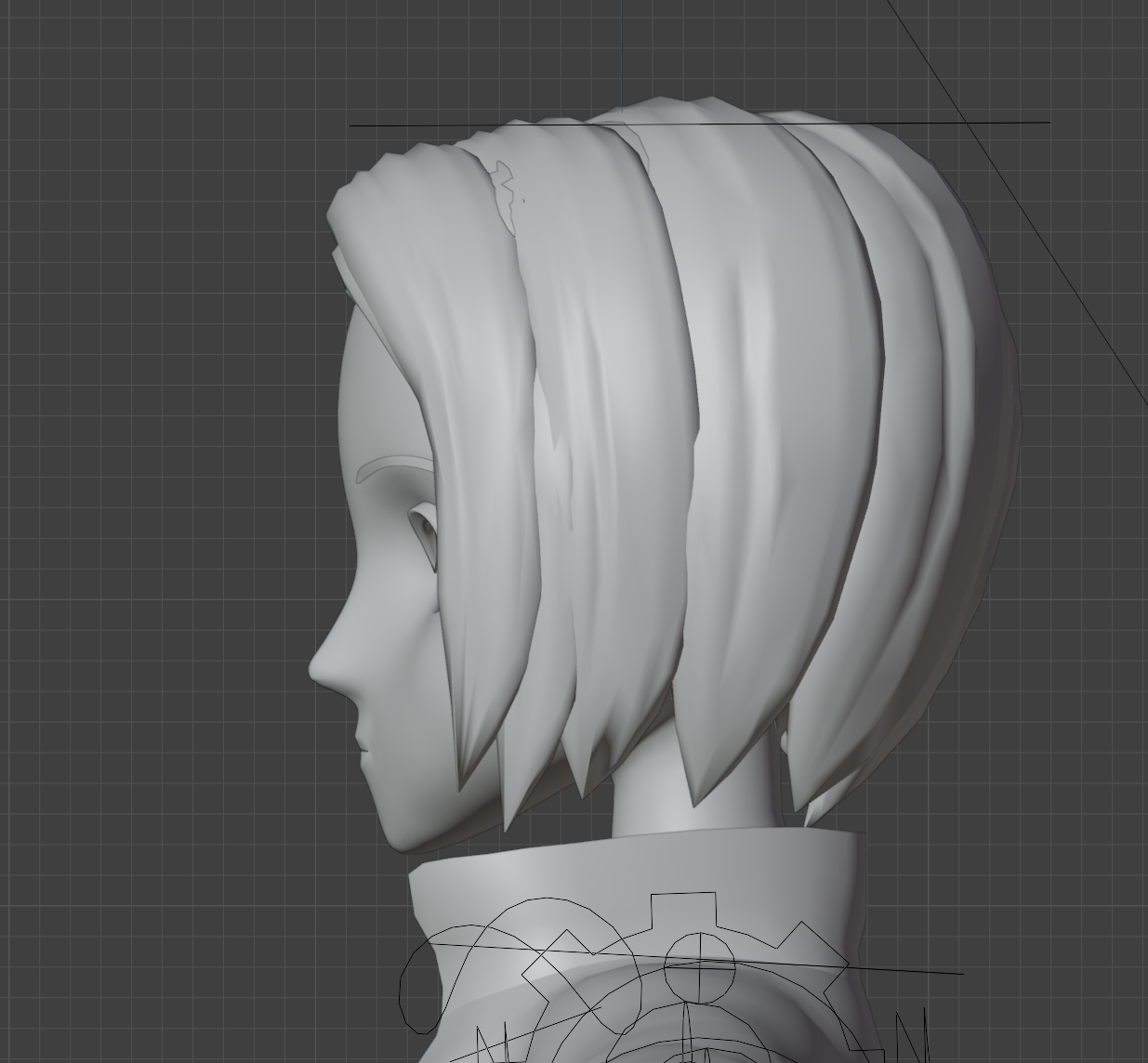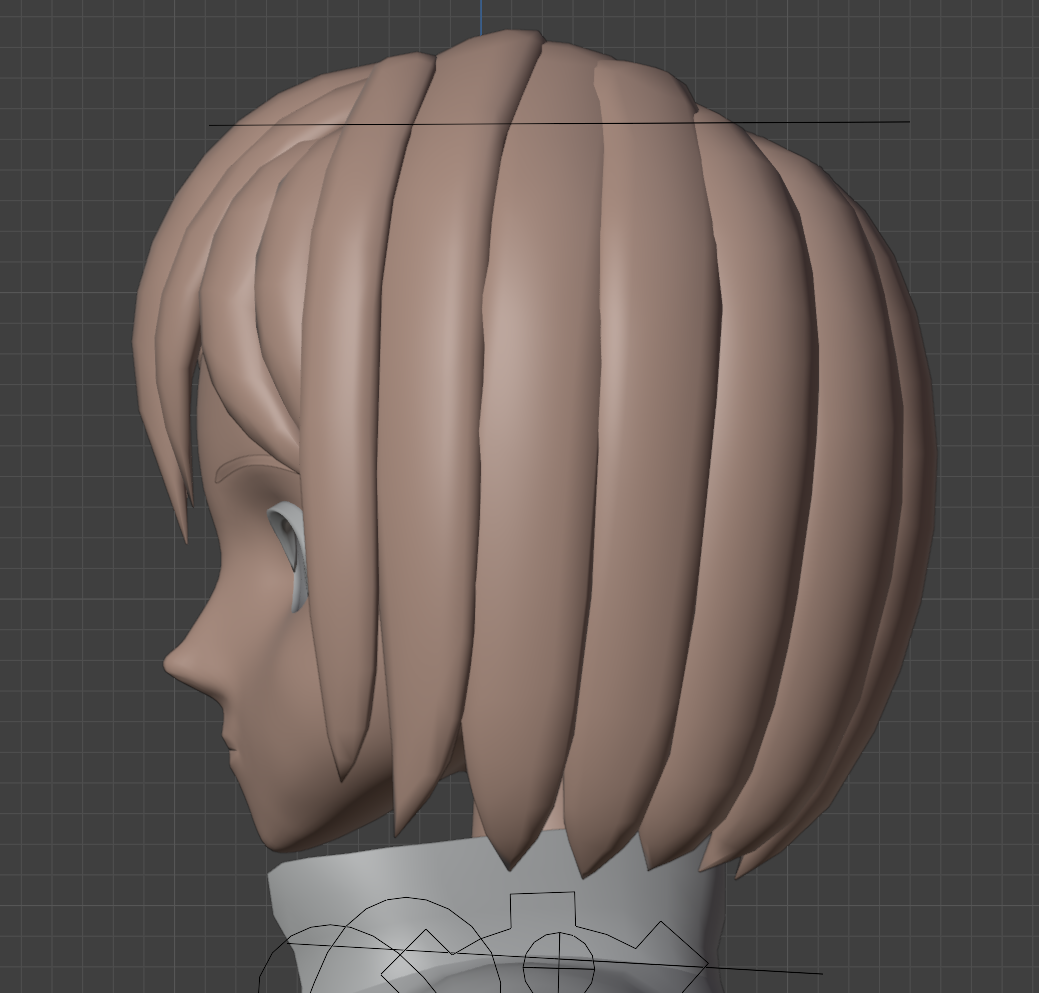In the Fall semester of the 2024–25 academic year, my goal was to create a 3D animation using Blender. I began by creating a 3D model of a character I could use in animations. I learned rigging, which allows me to control the movement of the character more easily.


I also learned an effective toon-shading technique, where I assign an individual light source to each material. This gives me more precise control over highlights and shadows. The image below is a test of a pixel art-style shading.

For outlines, I used the Line Art modifier in Blender. I masked some meshes around the eyes so they would not be outlined in certain parts of the face.


I also made improvements in modeling human characters. The left side shows a model I created in 2023–24, while the right side is the modified version created during the Spring semester of 2024–25. The silhouette of the character is more stylized, which works better in toon-shaded animations. This updated version also includes an added feature: automatic hair movement. This character was used in my Junior I.S. project for my Studio Art major.
I learned how to render the foreground and background separately and merge them together. This technique allows me to efficiently adjust foreground movement with minimal rendering time. The image below shows a foreground layer of my animation.

In the Spring semester, my goal was to learn the basics of After Effects. I applied this technique to create one scene in my Junior I.S. project.

I successfully merged separately rendered animation into the background of the main video.
In 24-25 academic year, I successfully met the goals I set for both semesters. I also led two workshops: “Shading in Blender” in the fall and “Animation in Blender” in the spring. I plan to continue working on 3D digital media and sharing my knowledge with other students on campus.
